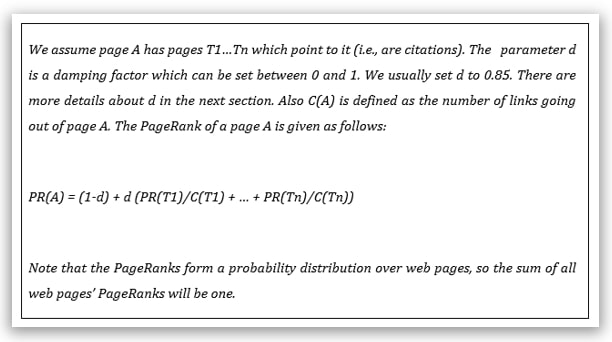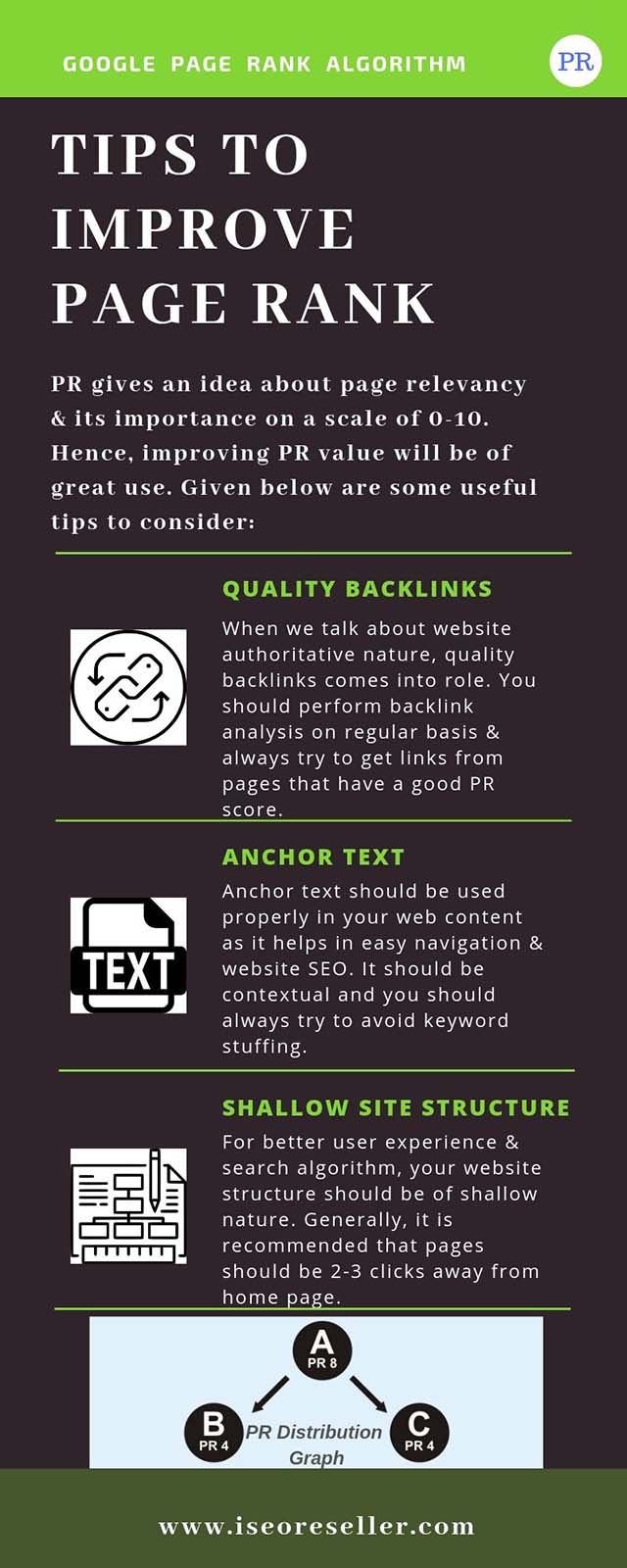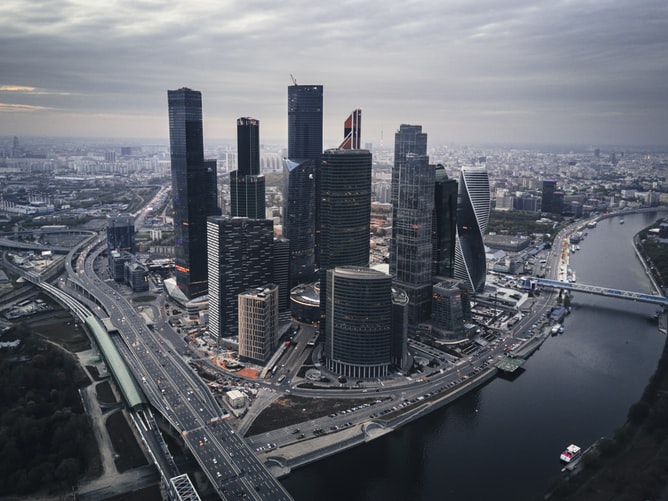Is PageRank still alive? Why it still matters? We all know that Toolbar PageRank was officially unavailable for public from 2016 onwards but do we still need to discuss it here. Of course yes, SEO PageRank(formerly Toolbar PageRank) still plays a crucial role in secret ranking algorithm. A lot of people get their eyes stuck on when they heard news about page rank in 2019. There is enough proof to justify that PageRank (PR) is currently in use & still one of the major ranking metrics that matters which cannot be viewed by general public access. Let’s discuss it thoroughly to have proper understanding.
What is SEO PageRank?
PageRank is an algorithm developed by Google cofounders & name was coined from Larry Page. It’s a Google system use to measure website authority. It is one of the best known method to determine webpage relevancy or importance. Apart from this, there are several other ranking algorithms which are important for delivering best results. PageRank is basically used to analyse few things: how many inbound links are there to a particular page & what’s the quality of linking sites. Considering 2-3 links from very high valued site is much more important than few 100s links from low valued or less reputable sites. And, thus pages will be given weightage accordingly.
It is a scale of number varying from 0 to 10 (with 0 having the smallest value & 10 being the greatest value for a page). While many SEOs believe that instead of being an integer value, PR goes to decimal value. Such beliefs mainly originated from Google Toolbar PageRank which display as a no. b/w 0 & 10. Though it’s a rough estimated value, Google yet have not released the most up to date value of PR in order to protect the privacy of algorithm details.
Why Google made Toolbar PR unavailable for public access?
Well, PR enables Google to show which page users are in search for & it ensures that search results should be safe & give best results to fit in users’ search criteria. Now, if everything was good then what had happened that make it unavailable for public. One of the main reason that can be taken into account is SEO. We know that it was used as ranking signal due to which it gave rise to huge link spam. Some devious SEO fellows tried to play unfair games with the system & exaggerated PR score unnaturally. Professionals started buying high PageRank links & agencies sold it across the world.
In response with this, Google get insane on black hat practice of SEO & started deprecating PR. Thereafter, they also maintain secrets about ranking algorithm. They stated that professionals shouldn’t give focus much on PR score & consider it as most important metric of ranking signal. But, people still considering it. So, finally it became unavailable for public access but it is still in use in secret ranking algorithm.
PageRank algorithm
The algorithm outputs a PD (Probability Distribution) which is used to show the chances that a user may randomly click on the links and will reach at any particular page. It can be used to calculate the value of documents of any size. Though in various research papers, it is assumed that distribution is evenly made among all the documents while starting of the computational process. Here, in computational process, it requires few passes termed as “iterations” to adjust the approximate PR value precisely to display value closer to true theoretical value. The value is designated between 0 & 1. As we know that probability of 0.5 means 50% chances of something to be happened. Hence, if PR value is 0.5 then it means that there is a probability of 50 % that a user is clicking on a random URL which will redirect to a document having PR value 0.5.
How PageRank works & how to calculate it?
PageRank calculation was originally defined & explained in the paper ‘The Anatomy of a Large-Scale Hypertextual Web Search Engine’ back in 1997. Given below is the actual portion of that paper, it states that:

PageRank or PR(A) is calculated via iterative algorithm & corresponding to eigenvector (normalized link matrix) of the web. Let’s simplify the above formula from the research paper to have clear understanding.
Writing the formula again,
PR(A) = (1‑d) + d (PR(T1)/C(T1) + … + PR(Tn)/C(Tn))
Here, we first subtract the damping factor (d) value from 1. ‘D’ is originally set as 0.85 which can be seen in the original paper itself. Thereafter, we take the PR of all the pages that are pointing towards & away from page ‘A’. Now, all these value are being added & then multiplied by the damping factor value i.e. 0.85.
You might be thinking over the use of eigenvector in the PR estimation value. Most of you might know that eigenvector plays a significant role in D.E. (differential equation). Prefix ‘Eigen’ means ‘characteristics’ which is abstracted from German. In the original paper of PageRank, it is clearly stated about eigenvector that it’s a specific kind of maths that deals with several moving parts & helps you to work on it simultaneously. This formula allows us to calculate a PR value of a particular page without knowing the final PageRank value of other pages. Looks strange! But each & every time the calculation is being made, you will get closer estimate of the final PR value. So, to get the true value, we make multiple calculation & remembers those value until we get the result which will not change further much.
Hence in other words, we can say that PageRank is an ‘Iterative Algorithm’ i.e. More the calculation is repeated, more the chances of getting correct value.

Tips to improve PageRank: We know that PR value is now not accessible for public & measuring it directly is not possible anyhow. But, still there are few tips we can follow to improve & enhance the PageRank value, they are:
• Building backlinks: A quality backlink is an effective factor in deciding the authoritative nature of any website. You should perform backlink analysis on regular basis, for that you can use some of the best SEO tools available in the market. Also, be sure that link juice that are flowing into your website should be from pages having high PR value. Apart from this, there is a common myth among SEO professionals that some links not able to pass PR value while some of them even passes through negative PR value (i.e. spam rank). To avoid these issues, always keep your link profile clean.
• Following good practices for outbound links: You should carefully observe that where links are live & inserted on a page, Links that are in your content have more values than the navigational links of your site. Also, maintain the no. of links that are pointing towards other external & internal pages to a reasonable no.
• Give advantage to link-less mentions: As ‘Semantic Search’ getting better day by day, link-less mentions will surely become important in near future. Till now, we cannot consider it as a ranking signal but Google has started taking brand mentions into consideration for its ranking based search algorithm. Well, link-less brand mentions works on the same principle of credibility as seen in link building. As we have discussed that Google uses brand mention in its algorithm. So, it will analyse & remark your authority by observing at all your brand’s mentions.
• Site structure should be of shallow style: It is believed & highly recommended that you should always try to keep your webpages as close as possible to your website homepage merely 2-3 clicks away is considered good. If it is not possible to do so because of so many pages your website have. You can even use breadcrumbs & internal search to make site browsing faster and easier.
• Proper anchor text: We should make practice of using proper anchor text as it helps in easy web navigation & website SEO. It should be contextual & you should avoid keyword stuffing as much as possible. When performed systematically & organically, relevant keywords placements in anchor text will able to easily explain search engines about your web page content.
Some of the biggest misbelief about PageRank that you should always avoid:
• PR metric is too old to consider: No doubt, the metric is too old & last updated version was in 2013. In today world, we know that an entire system can be outdated in a period of month. And, Google page rank tool was introduced approx. 20 years ago. But, still this ranking signal has bigger impact on search ranking algorithm & they are still updating & considering it which is not readily available for general public view.
• Presently, Google is not using it: Secondly, professionals also believe that Google has stopped using it. But, it’s not the real case. Google has never officially discontinued it. They just stopped it from being publicly available. We have discussed it earlier they hide the score just because of link spam which dramatically came into existence.
• Weight of page can’t be measure anyhow: As PR stopped being publicly available, weight of page can’t be measured like when PR score was available. No developer can claim about what PR value says about any page. But, to know the weightage there are alternatives available in the market which we can talk about. They are: In-link Rank (SEO Power suite), URL Rank (Ahrefs’), Page Authority (Moz). They are all developed in order to fulfil the goals of PR score & help to understand page weight from quality & no. of backlinks it has.
Conclusion:
Finally we came to an end of this interesting topic i.e. ‘Google PageRank Algorithm’. We discussed about its importance & how you can calculate it to know the working methods properly. Also, we understood about various tips that we can implement to improve its value. By doing, backlink analysis, external & internal links; all these play crucial role in attaining good PR value.
So, you don’t need to worry if it is not publicly available, Google is still using it in secret ranking algorithm. Well, large number of alternatives are available but having a good backlink profile is still very much important. In 2019, you can’t ignore any metric that can be responsible for website ranking. So, PR formula cannot be ignored as optimization process yet has a great impact on PageRank.
References:
• Google’s PageRank algorithm, explained
• Why we shouldn’t forget about PageRank in 2019
